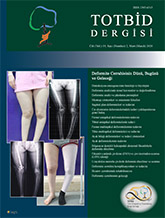
Computer assisted circular external fixators offer spatial deformity correction following Ilizarov principles in 3 planes around 6 axes without the need to revise major external fixator frame parts. Hexapodal external fixators were developed according to Stewart-Gough platform which is an example of 6 degrees of freedom (df). Mathematical background is based on Chasles theorem. Today, the goal of the limb reconstruction surgeon is to minimize the preventable complications, decrease the treatment time and return the patient to normal functional activity level as soon as possible. The major advantage of hexapods is the fact that they allow spatial corrections of the complex deformity around a virtual hinge in the minimum time possible. They also offer this to be performed in a shortened duration compared to classical Ilizarov frames in which the frames have to be revised many times during the course of correction. Common characteristics of hexapods are the two rings construct that are attached together with 6 struts that have universal joints. Deformity should be defined accurately in the software, along with the mounting parameters, which determine the spatial location of the frame with reference to bone. The more precise it is done, the better the accuracy of the correction is, and likewise, the less the need of the residual correction is.